Friday 30 November 2018
Five Ways to Boost Hungry Holiday Shopper Satisfaction at the Point of Sale
As decorations find their way into windows and onto shelves, it's time to ensure your restaurant is ready for hungry holiday shoppers.
TD Bank’s recent survey at the NY Business Expo revealed nearly 40 percent of business owners aren’t confident their current payment system can handle increased business during the holidays. If you want to crush the holiday rush, craft a plan that considers challenges like seasonal staffing, managing food inventory and maintaining customer loyalty, as well as your ability to process payments quickly and conveniently. By utilizing a payment processing system as a business management tool, you can create a game plan to tackle the holiday season confidently.
The below check list can help you be sure the kitchen and the front of the house are in order before the holiday rush:
Get Them in the Door
Incoming groups of hungry holiday diners may seem sporadic but humans are creatures of habit and their dining rituals tend to be predictable. Diners may be less likely to stop in if they see a long line or are told they can’t be seated for another hour. Make sure you’re utilizing a POS system that provides you with analytics about the ebbs and flows of foot traffic in your restaurant, thus ensuring you're always properly staffed and can turn tables over quickly and efficiently. If your restaurant is short staffed and you need to hire new employees for the season, leverage your POS system to help you accurately estimate those staffing needs.
Give Them What They Want
Whether you manage a sit-down restaurant or a fast-casual dining establishment, food inventory is key. Improperly managed inventory can lead to wasted food and can wipe out menu favorites if key ingredients run out. Heavy holiday foot traffic might seem particularly daunting, but not with the right tools on hand. Cloud-based POS systems take what was once a tedious task – managing inventory – and make it easy to manage and understand. POS systems track purchasing habits, help determine which items are first to sell out, and will assist in calculating exactly how much of the ingredient you should order.

Make it Snappy
Particularly with fast-casual restaurants, quick payment processing is essential to ensure steady foot traffic without overcrowding. Shaving a few seconds off each transaction by implementing a contactless payment option can completely revolutionize the way a line moves. For lightning-fast payment processing, consider a stationary cloud-based POS system. Looking for something more convenient? Portable POS systems bring payment tableside. These handheld devices help eliminate extra trips for waiters and waitresses. Fewer trips to deliver the check means they can spend more time assisting other diners.
Keep Them Coming Back
As seasonal shopping ticks up and the familiar panic of the holiday season sets in, many diners will be looking for their go-to restaurant. The holidays may leave many frantically running other errands, and food may be the last thing on their mind. You can change that with a POS-based loyalty program, which not only helps you track spending habits of customers, but also encourages repeat purchases. That helps turn occasional customers into regulars.
Don't Go it Alone
Amid the holiday craziness, don't let your finances get off track. A recent TD Bank survey revealed that only 45 percent of business owners were confident about how to handle their finances and accounting. In fact, three-quarters reported that they don’t have a financial advisor or dedicated banker to educate them on financing. Before the holiday rush, consider meeting with a financial professional to make sure that you’re ready to handle the increase in foot traffic.
If your business has encountered issues with staffing, inventory, payment processing, or maintaining loyalty during the holiday season, odds are an upgraded, app-based POS system may help alleviate some or all of these problems. By partnering with a bank that fully understands the unique needs and opportunities of your business and leveraging new technology to help solve many of these traditional management issues, owners and managers can remain focused on the bread-and-butter (no pun intended) of their business – the food.
By being proactive with your preparations, your restaurant will be ready to greet those hungry diners as they stroll in with shopping bags in hand this holiday season.
Five Ways to Boost Hungry Holiday Shopper Satisfaction at the Point of Sale posted first on happyhourspecialsyum.blogspot.com
Thursday 29 November 2018
Three Problems With Your Restaurant’s E-Club – And How To Overcome Them
Imagine that you’re settling into your weekly marketing meeting when the topic shifts to your e-club mail blast campaign. The exchange that follows is the type you’ve heard all too often.
Director: Let’s take a look at last week’s e-club campaign. How did it perform?
Marketing Manager: Not too bad. Sent 500,000 emails with a 15 percent open rate. It’s continued growing over the last three months.
Marketing Analyst: But… we only saw 400 transactions with that promo code.
Marketing Tech: Using that code on the POS terminal is easier because our servers know that’s the same promo as our national ad promo.
Marketing Analyst: Still – we’re not getting the whole picture here. We need to know how many people who received the email and then used the code to assess the impact.
Marketing Manager: How do you even get that info?
Marketing Analyst: We need a consistent metric on incremental impact. We can’t simply lump half a million responses together and expect to get anything meaningful from it.
Director: Ok, so we don’t know how it performed… we need to figure this out.
E-clubs are supposed to drive sales by turning customer experience into something more personal (i.e. – a special email coupon on a customer’s birthday, a one-year sign-up anniversary cashback bonus, etc.). But are they really working? How are you measuring that success?
These exchanges are indicative of three common problems in retail and restaurant marketing measurement.
Problem #1: Promo code redemptions do not necessarily equal impact
Most consumers who redeem coupons are already active with your brand. But there is no concrete evidence that a redemption is at all incremental until it is positively attributed to an e-club member. One tool to account for this is an impact model that looks at same store sales and track daily redemptions. Over time, this allows you to understand (and use as a rule of thumb) the impact of a promotion. A redemption is really nothing more than a server entering an email code (or something like it) into the system after a guest shows it to them.
Problem #2: The server’s job is to get through the transaction quickly
Servers are hard workers and fast thinkers. Their jobs are stressful, so they will take shortcuts when they see the opportunity. This can disrupt marketing’s efforts to measure impact of promotions over time. Tests with a variable and control group can end up with inaccurate results that are outside of the margin of error.
Problem #3: Most restaurants do not have the technology to match transactions to their e-club/mobile app
How do you link promotional emails that are sent to and received by an actual person to your revenue data from your POS system? Without tracing and linking these two, you’re still looking at additional margin of error.

Overcoming Your Restaurant’s E-Club Problems
There are two steps to beating your restaurant’s e-club problems.
Step 1: Design a experiment to determine overall sales impact.
Think about what happens in the absence of marketing. What activity would your customers have if you didn’t market to them at all? Set up two groups of customers in a certain market – one you will market to and one you will not. Track same-store sales before and after a promotion and compare the two groups’ results. With a large enough e-club, this will give some indication of overall sales impact.
Step 2: Expand your e-club to include behavioral data.
Did you know that you can append behavioral data to your e-club if you have track 1 data in your POS system? Now, you most likely can’t do this yourself since this also requires external data. But there are services that can do it on a regular basis for you. The best part? Revenue off the insights are quick to cover the costs.
Comparing behavior data between your promotional group and control group (i.e. – the group you did NOT contact) will give you an extremely valuable and honest assessment of the impact of your marketing.
If 15 percent of your e-club customers who receive a promotion make a purchase compared to just 10 percent in the control group, the incremental performance of the promotion is 5%. However, the promotion most likely offered a discount to the portion of the 15 percent who used the promotion. Remember to consider sales, discounts, and margin to the analysis.
E-Clubs are powerful tools for generating revenue. But when answering the question, “How is our e-club marketing performing?” make sure you’re backing it up with data and facts. Doing so will set you up for real future marketing success.
Three Problems With Your Restaurant’s E-Club – And How To Overcome Them posted first on happyhourspecialsyum.blogspot.com
Wednesday 28 November 2018
The Ultimate Guide to Starting a Catering Business
Catering is an exciting and innovative industry — but how do you make sure your catering start-up is set on the path to success?
For tips and advice on launching a new catering company, check out this guide and make sure you dodge the common errors made by others getting started in the industry.
What You Must Know
From buying the right restaurant furniture to complement the tone of your new business, to getting clued up on tax and funding, there are several things you must be aware of when launching a new catering company, such as:
- Determining how much money you need to get going
- Conducting market research
- Coming up with a business plan for funding
- Choosing between operating as a sole trader or a limited company
- Working out how you will pay tax
- Setting up your business with a local authority
Why Get Into Catering?
You have a lot to gain by starting a business in this industry. Although it can be tough at first, you get great satisfaction from building a successful company — plus, there’s plenty of money to be made if you get it right. Other reasons to start your own catering business include being your own boss, doing something you enjoy and having your own working hours.
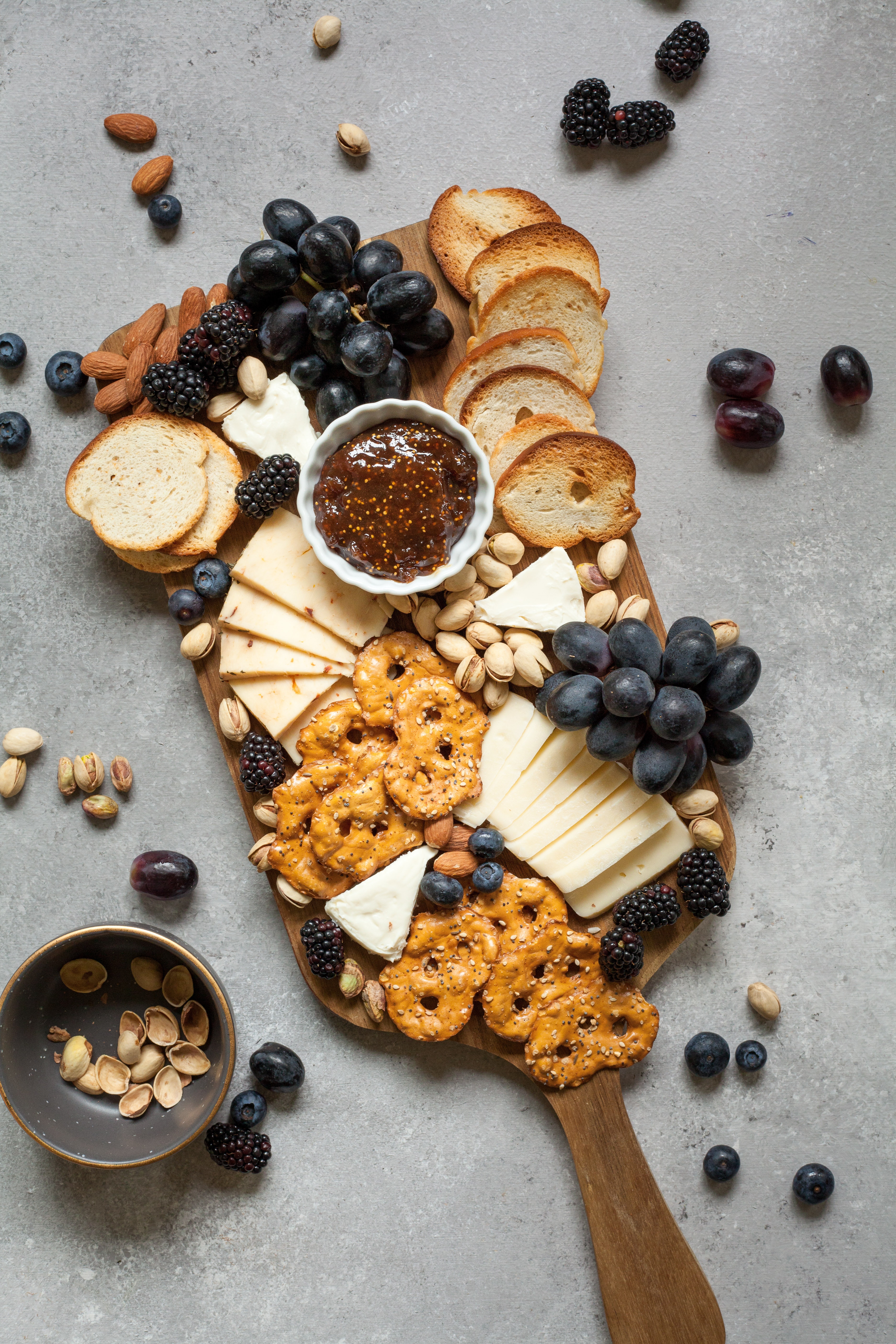
What You Need To Do First
The success of your business depends on carrying out adequate market research. Nearly one in ten food service businesses fail to reach their first birthday, and a lack of knowledge about the market is often believed to be a major reason.
Making a Success of Research
Start by determining what you want to learn from your market research — key questions include:
- How saturated is the market?
- What do people who live near my business want?
- What are their buying habits?
- Who are my potential customers?
- Who are my competitors?
- How much do they charge?
- Are they successful?
As soon as you’re happy with your list, start finding out the answers.
Different Forms of Market Research
Primary
Primary research is the gathering of your own data, mainly involving questionnaires, surveys and social media polls. If you don’t have access to a customer database, head to your local high street, shopping centre or supermarket and ask members of the public to answer questions. You could also get in touch with a company that specialises in collecting and analysing market research data.
Secondary
This is research that has been published by other bodies and you can carry out secondary research by doing something as easy as searching online. But be careful to check when research was gathered and published — if it was in 2003, it may not be relevant today.
Also, try to stick with credible sites, like government organisations and businesses that specialise in publishing reports and data for up-to-date information.

Funding Your New Business
It’s not cheap to fund a new catering business, but it is achievable. The cost of setting up a business differs. However, a report by Lloyds Banking Group suggests the average cost is about £12,000. 25% of costs relate to securing property, with transport and IT other areas of significant outlay.
What are your priorities in order to start trading and earning cash? Do you need to buy property, or can you do it from home at first? Can you use a free online website instead of hiring a developer? Do you need to take on staff from the beginning or can you pick up the shifts?
Work to keep start-up costs low to ease the pressure involved with launching a new venture — you never know when that extra bit of saved cash will come in handy.
Other Money Considerations
Now you have your list of start-up priorities, you can start adding up an overall cost. We’d also advise you to add 30 percent on top of your final figure to factor in unexpected charges.
Don’t have the working capital? Ring your bank to see if they can offer you a loan or contact a private investor. Although, it’s best to speak with a financial advisor before entering into an official agreement. You need to ensure that terms are set out which are legally binding, for example.
If neither of these options are available to you, try crowdfunding, which is when a business pitches an idea online to secure donations and reach a funding target.
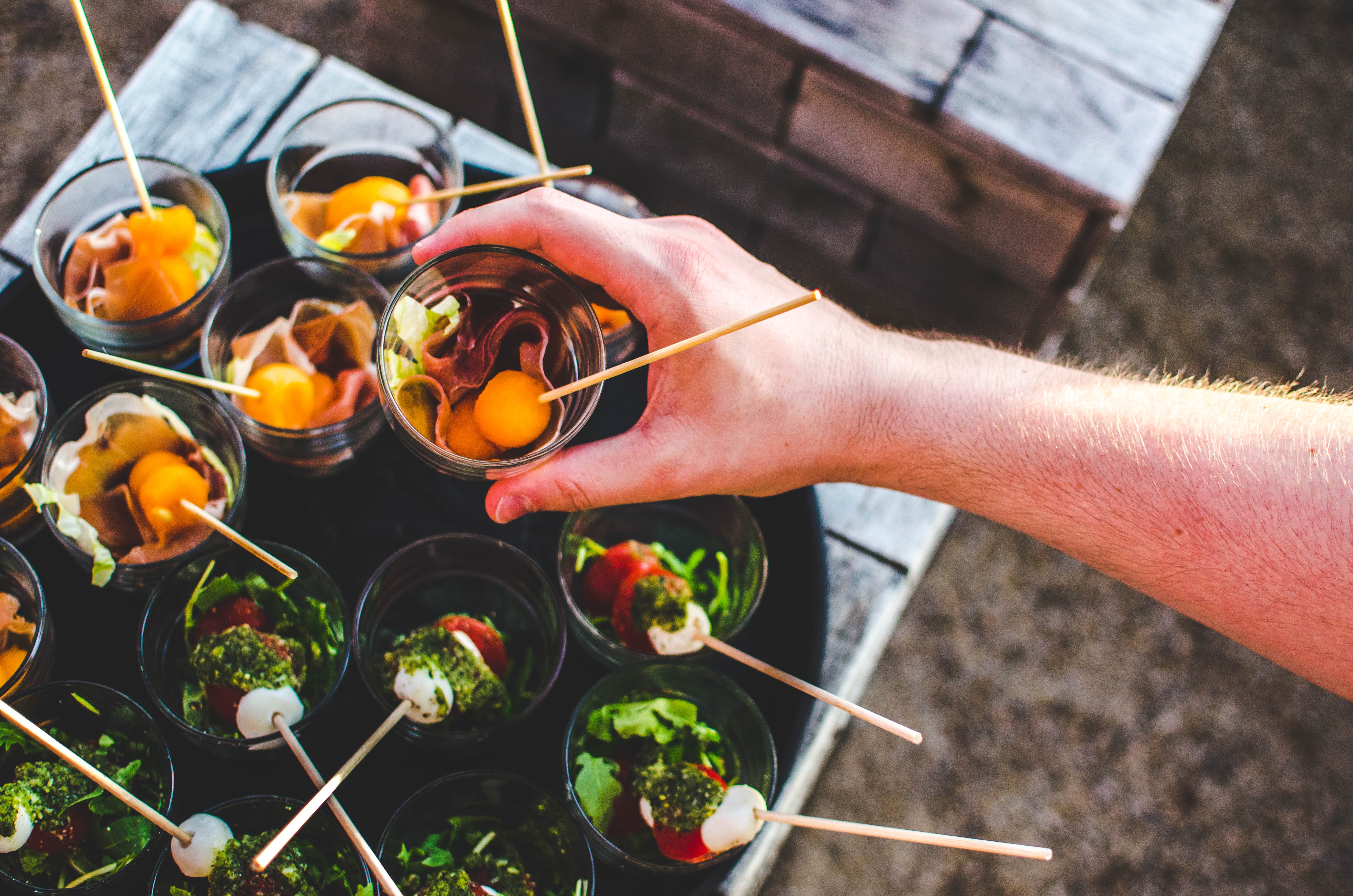
Costs to Operate Efficiently
Now, you can start trading — but you also have the operating costs to bear in mind. These are the regular outgoings you pay to keep your business trading, day-to-day.
Make sure you closely monitor your operating costs. If they exceed the amount you make from sales, you will be working at a loss — this is unsustainable. The main operating costs of many catering companies are split between fixed and variable.
Fixed Costs
These don’t change in relation to sales. They include:
- Rent/mortgage
- Licences to trade
- Loan repayments
- Business insurance
- Business tax
- Utilities
Variable Costs
These vary depending on increased or reduced demand. They include:
- Ingredients
- Labor
- General maintenance
- Fuel for transport
- Marketing
Knowing your operating costs and relating them to projected sales revenue lets you work out a near-accurate budget.
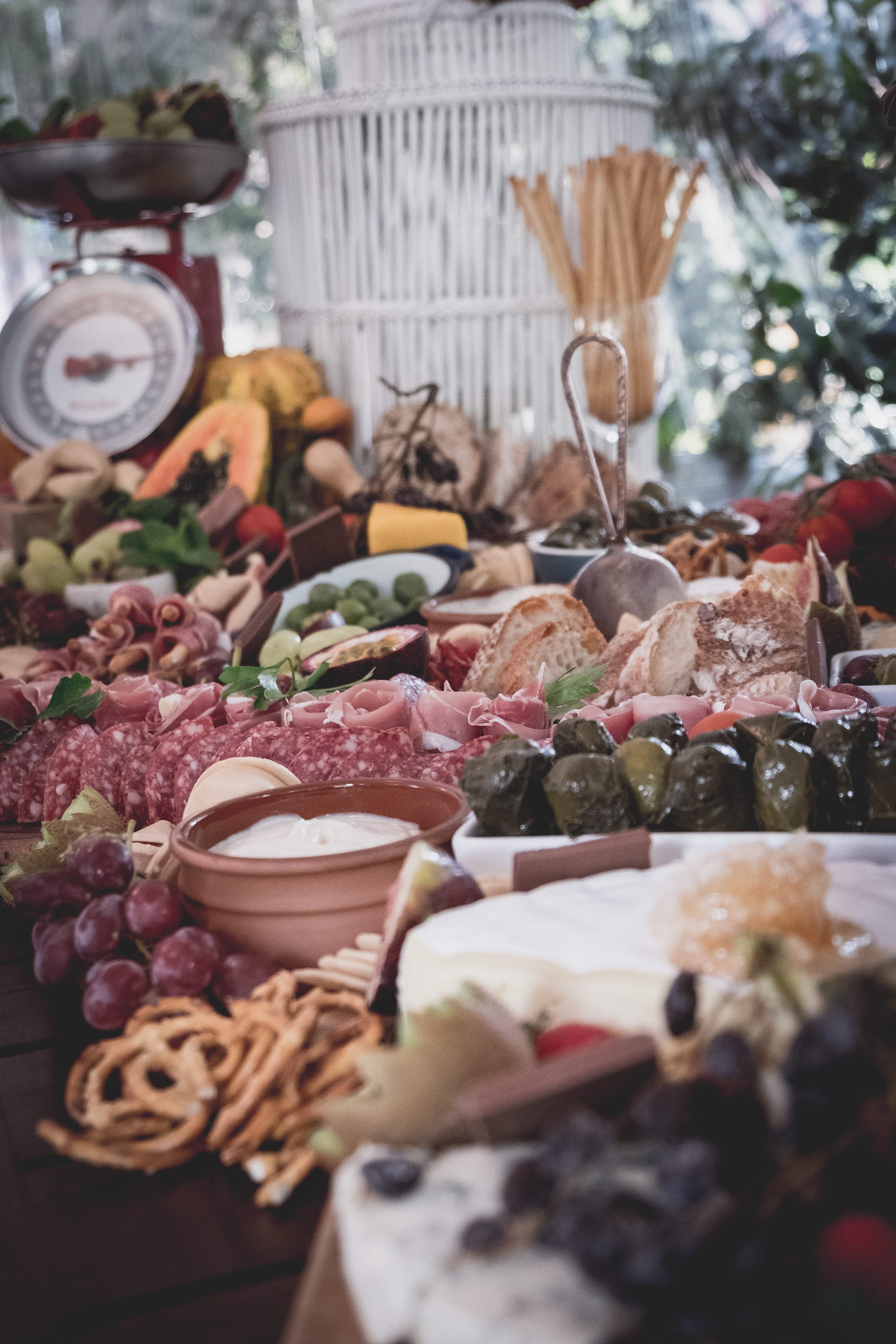
Sole Trader or Limited Company
Working for yourself means you must inform Her Majesty’s Revenue and Customs (HMRC). Anyone earning more than £1,000 a year from business activities needs to register self-employed as a sole trader or limited company.
If you’re a sole trader, you’re self-employed and the sole owner of a business. This includes keeping all profits from business-related activities after tax and national insurance. Becoming a sole trader is a lot simpler than starting a limited company. Plus, there are less accounting responsibilities.
Simply record your sales and expenses and submit a self-assessment tax return to HMRC once a year. However, your personal assets are not considered separate from your business. So, if your business gets into trouble, your home and personal savings could be in danger.
With a limited company, the business is separate from its owners financially and legally, so limited liability is a major advantage. If things go wrong, the only things at risk are any investments the founder made, and any assets attached to it. Basically, your personal assets are protected.
You will also pay corporation tax — often less than income tax. However, disadvantages include a more complex and costlier set up procedure. Financial reporting responsibilities are also time-consuming and may require you to hire an accountant. What’s more, your business’ organisational and financial information is also available to see on the Companies House website.
Choosing the Best Option
What are your circumstances? If you’re unsure, why not start as a sole trader and then form a limited company later? The UK has more sole traders than limited companies at the moment, but if you want further advice, speak to a financial advisor.
Tax and national insurance are taken off earnings under the PAYE scheme when you’re an employee. However, paying tax and national insurance becomes your responsibility when you start your own business. Sole traders must file an annual self-assessment tax return with HMRC, which includes recording money coming in and going out of your business. Keeping receipts, invoices and bank statements is critical — the HMRC might ask for proof of how you calculated your returns.
However, tax is different as a limited company. Firstly, corporation tax tends to be at a lower percentage rate than individuals, but all annual profits are taxable. As the business owner/director, you must declare any money you have drawn from the company over the previous year — like a wage. The withdrawn money becomes liable for income tax.
Registered as an employee of your own company? If so, tax and national insurance are deducted under the PAYE scheme. Ask an accountant or contact HMRC if you’re unsure about tax.

A Business Plan
Make sure the following features appear in your business plan:
- A clear understanding of your target market
- Your vision for the business
- Reasons your business will be successful
- Unique selling points
- Opportunities for expansion
- A plan to market your business
- Short-term and long-term business aims
- Expected sales/expenses over a specific period
Your business plan signifies the amount of research you’ve put into your business idea. A good business plan will inspire confidence in potential investors, while a poor one will appear unprofessional.

Registering Your Business
As soon as you start selling your products and services, you need a licence. Make sure to notify your local council 28 days before you intend to start trading — luckily, it’s free to register a business in the UK. All you must do is give details of the type of business you want to run, along with basic information — like the address you will trade from.
Trading without a licence can result in a fine or up to two years in prison! As soon as the council recognises your registration, an environmental officer (EO) comes to view your premises. If you run a business with a kitchen, the EO will check that it adheres to requirements set out in the Food Safety Act 1990. You will also receive a food hygiene rating that people can see on the council’s website.
Make sure you’re clued up on food safety risks and procedures, such as:
- Use of additives and food colors
- Cross contamination
- Temperature control
- Allergens
- Labelling
- Personal hygiene
- Premises hygiene
- Safe food storage
Also check ifyou need to notify your mortgage lender, need business insurance, need to pay business tax, or need to open a business account with your bank. Planning to sell items worth more than £42 online? There regulations for this, too. See the UK government and Food Standards Agency websites for more details about starting a catering business.
Beginning Your Start-Up Journey
Chat to other business owners to get an insight into the catering industry and search online for packs to help with legislation, allergens and hygiene. On top of plans, fundraising and getting the right equipment, you also have to think about bins, parking and licenses. Remember, the building structure dictates what type of license you need, while frying and grilling also have different requirements.
Basically, knowledge is key. Do your research, stay proactive and keep a close eye on your business’ outgoings to launch a successful catering start-up.
The Ultimate Guide to Starting a Catering Business posted first on happyhourspecialsyum.blogspot.com
Consumer Trends and Your Restaurant – What You Need to Know
How customers decide what to eat, and where they’re going to buy it from isn’t as simple as supply and demand – they are impacted by different motivations, trends and personal opinions.
As a restaurant operator, you need to be aware of consumer trends, and how they will affect the way patrons make their dining decisions.
What consumer trends do you need to be aware of?
A Greater Focus on the Experience of Dining
Dining out is an experience, one that can be helped or hindered by the menu, aesthetics of the venue, and the prior expectation of the diners. There are a growing number of diners who want more from the overall experience offered by your restaurant and are spending less time focused on just the appearance of their chosen dishes. They want style and substance, complimented by an atmosphere and unique experience.
Customers want to feel valued and know more about their chosen dishes, having a member of staff simply reciting the menu back to them, either online or in person, isn’t going to make a positive impact or entice them to order.
Listening to your customers online, taking in their feedback and adapting your plans to balance your goals and vision with their needs, will allow you to create more focused and specifically designed experiences, which you can then share with your community of guests and increase their interest in your venue.
Dining Out is A More Attractive Option than Delivery
With a wider range of delivery options, types of cuisine and menu items available, consumers have been tempted away from restaurants in favour of eating in the comfort of their own home. But with more restaurants offering events and interesting opportunities – such as wine pairing, live music, cooking classes, etc., customers are returning not just to enjoy the quality foods and drinks they can’t get at home, but to soak up the atmosphere, create emotional bonds and new connections as they rediscover their love of the hospitality experience.
Some of the most frequent complaints, and reasons for not returning to a restaurant are:
-
Inattentive or Rude Serving Staff
- Table not Ready on Time
- Meals not Looking or Tasting Like the Menu Description
- Uninformed Serving Staff
- Dirty Utensils or Table
These are all small matters that can easily be addressed with additional training or attention to detail, but they make a big impact on the customer and their impression of your establishment.
As a venue, your business is ripe for creating content to promote online – encouraging your guests to share their images and reviews, and showcasing the special features of your restaurant can help to promote your establishment, brand, and staff – gaining more interested audience members and additional enquiries, bookings and orders as a result.
Sustainability Is A Consumer Worry that Needs Addressing
With more focus on healthier eating and a growing global interest in how ingredients are sourced, and from where – restaurants can position themselves as ethically and morally responsible and attract the growing number of clients who take this into consideration when making their dining choices.
By finding alternatives that better protects the environment; you can balance your financial needs against your moral and ethical obligations and find a solution that works for everyone.
You should take the opportunity to promote your brand voice, values and vision across your social media channels and website – let your customers know what you believe in, and what you stand for. It is important however that you are honest – it is extremely easy to discover information online, and brands that are caught out lying or misleading their guests tend to suffer from extreme negative backlash.
A More Exciting Range of Vegetarian and Vegan Options
Gone are the days when a vegetarian or vegan alternative was a second thought. It is no longer acceptable to have one or two simple and often boring dishes, as the vegetarian or vegan option – in 2017, there was a 987 percent increase in demand for vegetarian options (Just Eat), and customers want to know more about their food.
There is such an incredible scope for creativity, and customers who usually eat meat are often opting for these dishes too. Focus on different diets means that customers expect a wider range of dishes to choose from, and they want to know that their food is not only healthy, but ethically sourced.
Promoting your menu online can allow you to discover more about your customer wants (by gauging how they react to suggested menu items) and encourage new customers to try your dishes.
You Must Adopt the Use of Frictionless Technology
Since the introduction of contactless payment methods and self-ordering stations or pre-booking online, Frictionless technology has changed the minimum expectations of the customer. Having Frictionless Technology working for your venue promotes a smooth customer journey from start to finish – and allows for a better experience.
From initially finding your venue and discovering what it is that you serve, to booking a table, dining and paying, then leaving feedback or reviews afterwards – your customers want this process to be as easy and stress free as possible.
It’s always important to determine the difference between a "fad" and a "trend" and know the best ways to implement new ideas to keep your business fresh and relevant. You need to enhance the customer experience you deliver at every stage, educate your audience on what you do best, and ensure that your service standards are consistent on and offline – letting your customers know that they can expect an experience with you that can’t get anywhere else.
Consumer Trends and Your Restaurant – What You Need to Know posted first on happyhourspecialsyum.blogspot.com
The Elusive Heavy QSR User Everyone is Missing
If QSR brands are all targeting the traditional “heavy” fast food user, are they missing consumers that cross over to heavy users for short bursts throughout the year?
Take me as an example. If a typical marketer developed a persona around my purchases/locations frequented they would never suspect that I’m a heavy QSR user. Although I’m a busy working mom with two young boys, I find time to visit the farmer’s market to buy $6 free-range eggs and much to the amusement of the staff at Moe’s, my five-year old always loudly proclaims that he’s a flexitarian. To top it all off I’ve been a pescatarian for more than 20 years and vegetarians don’t typically make anyone’s QSR target list let alone heavy user list, but I should be on that list.
We know that being a busy parent increases QSR and pizza usage, but how do companies fighting for share of stomach capitalize on these trends?
At least I should be on their list during the summer, because changes in my summer behavior make me an elusive QSR heavy user. Looking at my own seasonal behavior made me wonder how much other consumers change their eating behaviors due to personal factors.
Do short- and long-term lifestyle changes such as moving, busy seasons at work or participating in seasonal sports temporarily change the way we eat? Trish Muller, former CMO of The Home Depot says: “It’s evident that both big and small life changes influence consumer behavior; we can see it in data as well as in our personal lives. For example, I recently transitioned from the position of CMO at The Home Depot to launching my own consulting firm. This move not only changed my “personal trade area,” but it temporarily impacted where and how often I go out to eat as I adjust to my “new normal.”
Muller continues to say, “It’s important for marketers to understand that consumers’ lives are fluid, with many micro-moments, which present an opportunity to better understand them through data, to better serve their needs. Gaining an ongoing view of our consumers is the holy grail of modern marketing. The key to success is using data to anticipate these consumer changes and quickly adapting marketing strategies to capitalize on these heavy purchase “waves.”
The need for convenience is a significant driver in influencing eating-out behavior, given how fluid and busy our lives can be. According to the Valassis Awareness-to-Activation Study (conducted by NPD) the top two behaviors for all parents with a busy week (activities/sports scheduled for their children) are to order pizza (56 percent) and pick up fast food (43 percent). What’s equally interesting is that 74 percent of millennial parents say their busy schedules influences whether they dine out, carry out or get delivery (147 index compared to all consumers).
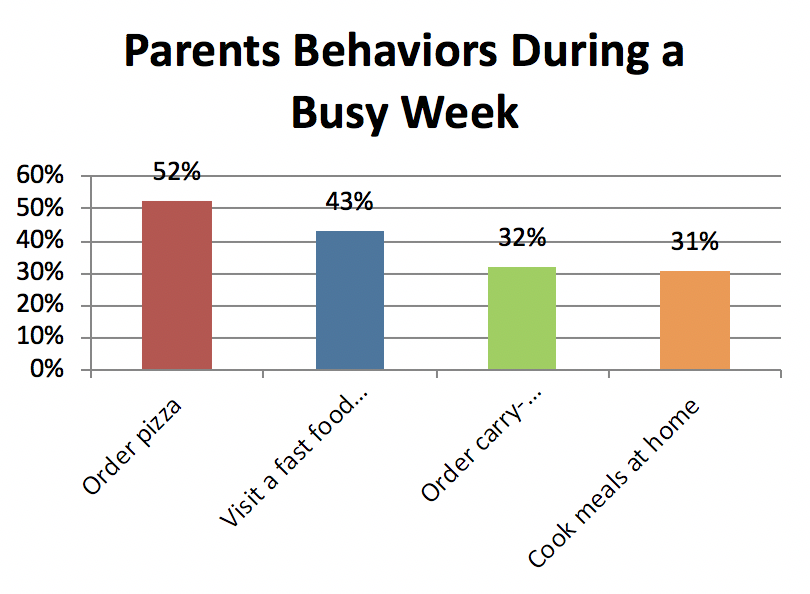
Source: Valassis Awareness-to-Activation Study conducted by NPD. Question: Whenever you have a busy week with a lot of activities/sports scheduled for your child(ren), which of the following are you most likely to do? (Please select all that apply)
We know that being a busy parent increases QSR and pizza usage but how do companies fighting for share of stomach capitalize on these trends? And on a larger scale, how are industries pivoting to capitalize on the profound shift in the way they can gain and apply advanced consumer attributes?
John Ross, author of two books on consumer behavior and President and CEO of IGA, a 5,000+ store global grocery chain has tackled this issue. He acknowledges that retailers can get confused by consumer data and that consumers that just made a purchase are no longer in the market to buy and therefore shouldn’t be considered shoppers. “Shoppers are people about to buy, and they are much trickier to find. It is especially true with convenience-driven shoppers who may show up, shop and exit at such speed that it’s hard to understand how they shop and why they buy. Spontaneous shoppers often appear to be random and undisclosed, but that is usually not the case. Just because they make quick decisions and move from shopper to customer at speed doesn’t mean they aren’t thoughtful, discriminating and information hungry,” he says. “People in motion need answers fast and they consume media quickly to get the information they need to make smart decisions. They are often highly influenced by user reviews, in-store signage and recommendations. And they tend to over index on mobile usage too.”
I agree with Ross’ assessment that although shopping behavior can appear to be random, it can also be predictive. Capitalizing on four-dimensional data that includes data from past purchases and in-market signals can be used to identify a consumer’s most current purchase intent.
Understanding the consumer is a difficult task especially as consumer behaviors continue to evolve. Technology has finally advanced to capture data that just recently marketers could only dream of obtaining. Developing and targeting personas by looking at consumers in isolation over a short period of time has transitioned to include seasonal and personal modifications. It is now possible to identify prospects that not only look like your consumers, but also travel to or live in your restaurant’s trade area and regularly visit your competitors.
Layering mobile location data with shopping behaviors like purchases, content consumption, promotional/ coupon sensitivity and restaurant visits is the most sophisticated way to ensure you’re not missing key peaks in behavior that may otherwise be overlooked.
The Elusive Heavy QSR User Everyone is Missing posted first on happyhourspecialsyum.blogspot.com
Tuesday 27 November 2018
Romaine Outbreak Update: Call for Voluntary Labeling
Last week, The U.S. Food and Drug Administration, the Centers for Disease Control and Prevention (CDC), along with state and local partners, began investigating a multistate outbreak of E. coli O157:H7 likely linked to romaine lettuce and advised retailers, restaurants and other food service operators to not serve romaine lettuce until more was known. While the investigation continues FDA is announcing new steps to help consumers better identify where their romaine is grown through voluntary labeling. At this point, the investigation suggests romaine lettuce associated with the outbreak comes from areas of California that grow romaine lettuce over the summer months, and that the outbreak appears to be related to “end of season” romaine lettuce harvested from these areas. The involved areas include the Central Coast growing regions of central and northern California.
By encouraging place-of-origin labeling for romaine lettuce, the FDA is moving the entire produce industry toward labeling that will make outbreak response more effective and safety warnings to consumers more targeted.
This is the first time, the FDA is pushing place-of-origin labeling for produce and it's an important step in tracing the source of outbreaks and limiting the scope of recalls, said Creighton Magid, a partner at the international law firm Dorsey & Whitney and head of its Washington DC office. He also serves as the co-Chair of the firm-wide Products Liability practice and works with clients to reduce their liability risks and to help them navigate the federal regulatory system, particularly in connection with the U.S. Consumer Product Safety Commission.
"The need for such labeling is highlighted by the recent directive not to eat romaine lettuce," Magid said. "Unlike manufactured products, which can be traced through serial numbers, a consumer generally has no way to know where fresh produce was grown. That makes tracing the source of an outbreak more difficult, and also prevents limiting recalls of produce to products of a particular farm or region. By encouraging place-of-origin labeling for romaine lettuce, the FDA is moving the entire produce industry toward labeling that will make outbreak response more effective and safety warnings to consumers more targeted."
The FDA is continuing tracebacks of romaine lettuce from locations where impacted consumers purchased or consumed romaine lettuce before they became ill in order to identify specific locations that are the likely source of the outbreak and to determine the factors that resulted in contamination. Through laboratory studies they identified that the E. coli O157:H7 strain causing the outbreak is similar to one that produced an outbreak of E. coli O157:H7 in the fall of 2017 that also occurred in the U.S. and Canada, which was associated with consumption of leafy greens in the U.S. and specifically romaine lettuce in Canada.
"The FDA believes it was critically important to have a “clean break” in the romaine supply available to consumers in the U.S. in order to purge the market of potentially contaminated romaine lettuce related to the current outbreak," said FDA Commissioner Scott Gottlieb, M.D. "This appears to have been accomplished through the market withdrawal request of Nov. 20, 2018. Knowing the growing origin of produce will continue to play an important role in allowing consumers to avoid contaminated products and facilitating market withdrawals and tracebacks. That’s why we previously called on the romaine lettuce industry to provide unambiguous and clear information to consumers regarding where their lettuce was grown and when it was harvested."
The FDA recently participated in discussions with the major producers and distributors of romaine lettuce in the U.S. and with the major trade associations representing the produce industry regarding product labeling and dating to assure consumers that any romaine lettuce that will come onto the market is not associated with the current outbreak of E. coli O157:H7. The labeling will identify the origin of the romaine based on harvest region, along with the date of harvest. This can improve the ability of the FDA to provide more targeted information to consumers in the event of a future outbreak of illness. The FDA also has commitments from the romaine lettuce industry that such labeling will continue into the future and become the standard for their products.
In addition, the leafy greens industry has agreed to establish a task force to find solutions for long term labeling of romaine lettuce and other leafy greens for helping to identify products and to put in place standards for traceability of product. The task force will also examine information from this outbreak to identify measures that led to its occurrence and how to prevent ongoing safety problems with romaine lettuce. One outcome could be to extend the commitment for labeling for origin and date of harvest to other leafy greens.
The FDA currently advises:
- Romaine lettuce entering the market will now be labeled with a harvest location and a harvest date. Romaine lettuce entering the market can also be labeled as being hydroponically or greenhouse grown. If it does not have this information, you should not eat or use it.
- If consumers, retailers, and food service facilities are unable to identify that romaine lettuce products are not affected – which means determining that the products were grown outside the California regions that appear to be implicated in the current outbreak investigation — we urge that these products not be purchased, or if purchased, be discarded or returned to the place of purchase.
- Romaine lettuce that was harvested outside of the Central Coast growing regions of northern and central California does not appear to be related to the current outbreak. Hydroponically- and greenhouse-grown romaine also does not appear to be related to the current outbreak. There is no recommendation for consumers or retailers to avoid using romaine harvested from these sources.
The FDA has urged growers, processors, distributors and retailers to:
- clearly and prominently label all individually packaged romaine products to identify growing region and harvest date for romaine; and
- clearly and prominently label at the point of sale the growing region when it is not possible for romaine lettuce suppliers to label the package (e.g. individual unwrapped whole heads of romaine lettuce available in retail stores).
As of November 26,, this outbreak has resulted in 43 people becoming ill in 12 states, with the last reported illness onset date being October 31. An additional 22 people in Canada have become ill, and the FDA and our partners are also coordinating the investigation with Canadian health and food safety authorities.
Romaine Outbreak Update: Call for Voluntary Labeling posted first on happyhourspecialsyum.blogspot.com
Are There Real Benefits of Online Ordering?
From McDonalds to small restaurants, more restaurants are taking advantage of online ordering. Easy and efficient for both the customer and the restaurant, online ordering is a tool that every restaurant should consider.
Need proof? Here are the top eight benefits of online ordering:
Almost Any Restaurant Can Benefit from Online Ordering
Do you deliver? Great! Online ordering just streamlines that process. Pickups are also made easier through online ordering. Even sit-down restaurants can take advantage of online ordering to allow busy or travelling customers arrive when their food is ready, or as another stream of revenue when table space has been maxed out.
Not to say that your restaurant won’t have to change at all to accommodate online ordering, but with little to no reworking, most restaurants can use online ordering to boost profits and expand their business.
Online Ordering is More Common than Ordering Over the Phone
In 2016, 6.6 percent of orders were placed online, while only five percent were placed verbally over telephone – and this trend is projected to continue.
Online Ordering = More Accuracy = Happy Customers
No more “I’m sorry, could you repeat that?”. Online records add an extra layer of accuracy to the ordering process, ensuring greater satisfaction among your customers.
Convenience
From meetings to crowded areas, there are times when you can’t make a phone call. Online ordering allows customers to order anytime, anywhere.
Larger Orders
When customers can browse the menu without feeling rushed by lines, and they don’t have to think about physically handing cash to someone, customers tend to purchase more. Researchers have even found that on average, orders are up to 26 percent larger when placed online. Now that’s profit!
Create a Better Dine-In Experience
Yup, you read that right. When there are less people dining in, employees can shift their attention to catering to their dine-in guests. And when in-restaurant service is faster, customers are happy. It’s a win-win!
Better Customer Data
Who are your regular customers, and what are their ordering habits? When do they normally order? Which food items are most popular? Are they responding to your promotions? In-house solutions such as PAR’s Brink Online & Mobile Ordering system allow you to analyze these trends so you can customize your menu, prices, and promotions, as well as tailor the experience to the individual customer.
Meet Customer Demand and Then Some
Most people use the Internet – many are online for hours every day. By implementing an online ordering system, you’ll not only meet your customers where they are, but you’ll stand out as an innovative, cutting-edge business.
Are There Real Benefits of Online Ordering? posted first on happyhourspecialsyum.blogspot.com
Brand Refresh: Revamping Your Customer Experience in the Digital Age
Take a look at your phone. How many restaurant apps have found their way onto your screen?
Whether that number is zero or dozens, it’s a number that is likely on the rise. Restaurant brands around the world are revamping their digital customer experiences to include the digital ordering and loyalty programs customers increasingly expect from restaurant mobile applications. The movement into the digital age is playing a key role in the future of food service, and the brands successfully redefining themselves in the digital world are seeing a surge in not only app users, but also market analyst optimism on the impact their digital programs provide for the value of the brand.
The movement into the digital age is playing a key role in the future of food service.
Digital experiences are driving brand experiences more often than ever before, but how can a revamped digital experience play a role in serving your customer better? How can your brand most effectively gain measurable, actionable insights from digital programs?
The answer is best practices to keep front and center in your customers mind, and on their phone. It’s important, for example, to understand your brand’s existing appeal to its customers. Is it emotional, playful or matter-of-fact? The use of branded technologies should continue to play on the emotional experiences most associated with your brand, to solidify your position in the consumers mind, and to keep them thinking of your brand when the time is right to drive repeat business.
Also important is understanding what your customers want out of digital technologies. In-app ordering, couponing and deals or loyalty programs are expected from restaurant apps today, and it’s important to decide if you want to offer all or just a few. Do you already offer some form of digital technology or are you just dipping your toes into the digital water? Whether you are rebranding online and on mobile, or you’re looking for a partner to help you grow in the digital landscape, it’s important to have a partner that understands the lay-of-the-land and what will deliver the best ROI for your brand.
Understanding your brand identity and revamping your restaurant brand with the consumer and their future in mind is not always an easy feat. As restaurant moguls look to connect with younger guests and cement their role as an industry leader, brands must cohesively update everything from logos to store design to new technology while staying true to the attributes that built their brand loyalty.
McAlister’s Deli did just that as the Fast Casual chain has implemented a rebranding that affects everything from the logo and employee uniforms to the function and form of each location.
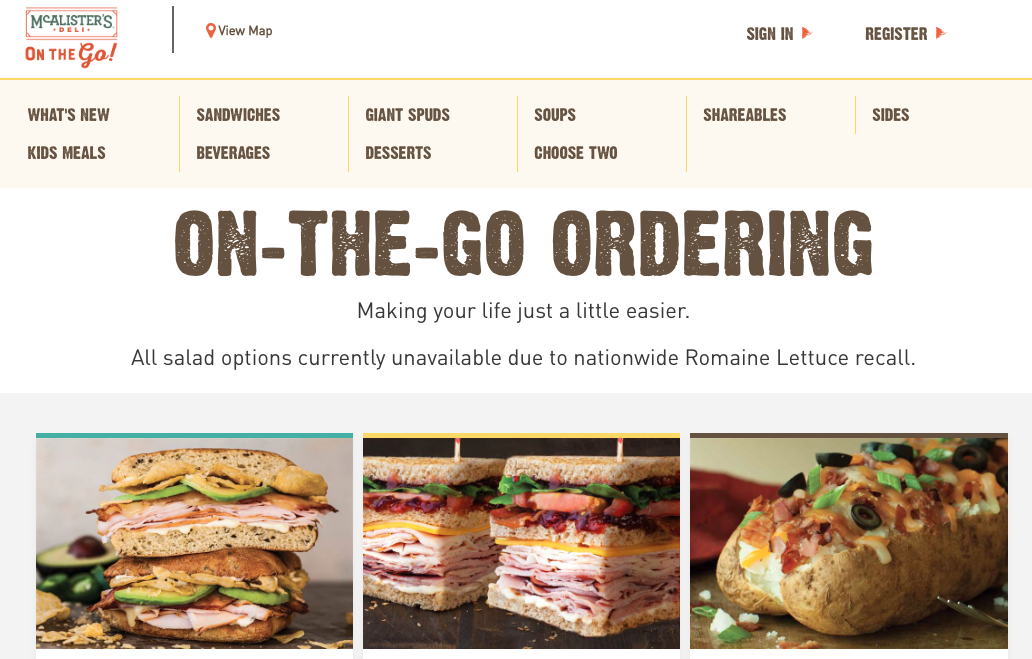
Outside of decor and physical updates, McAlister’s implemented a cohesive digital platform, starting with a fully integrated point-of-sale system as well as mobile ordering, email marketing, loyalty, intelligent push notifications and analytics to continue to drive home its contemporary feel.
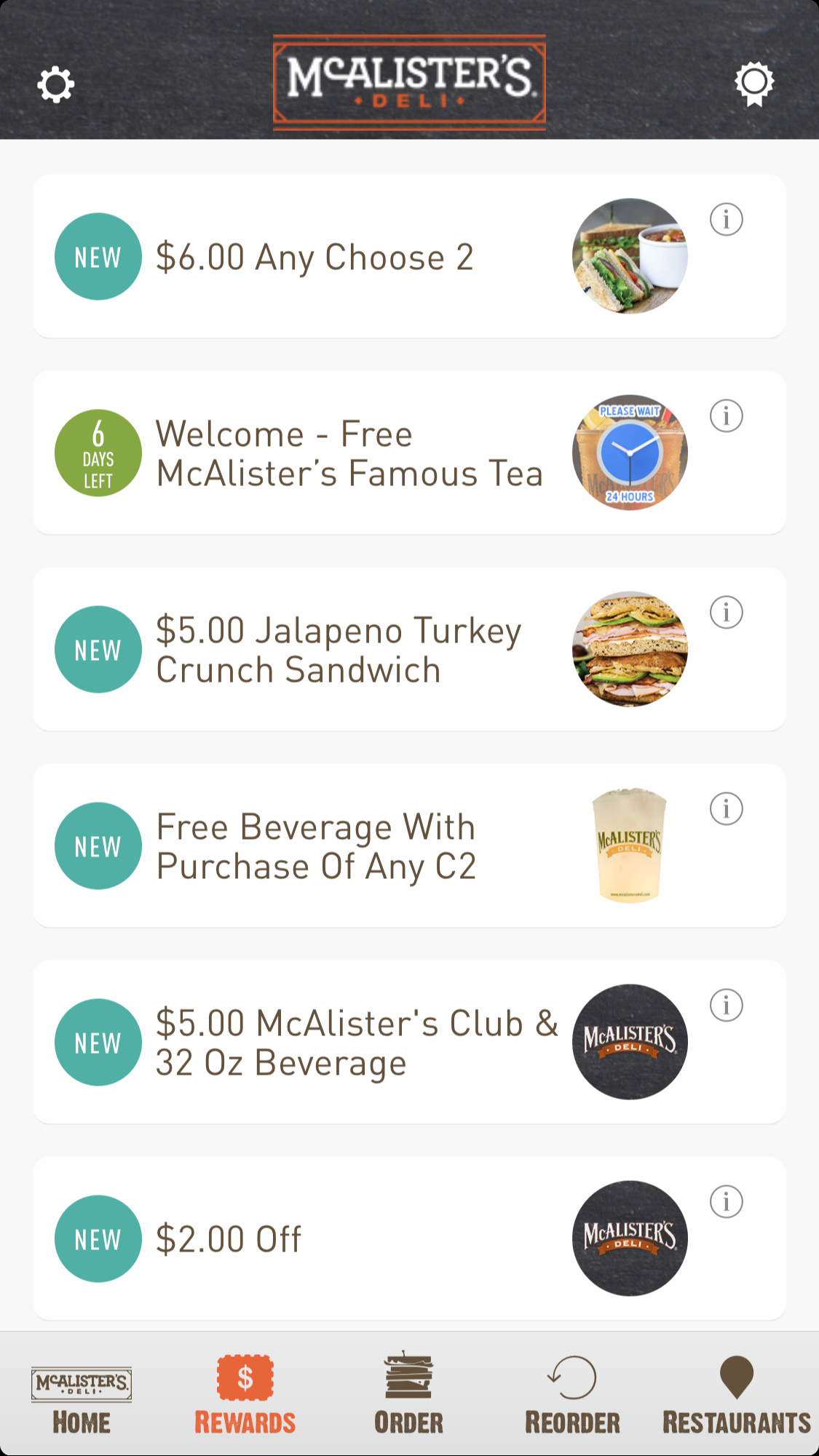
The key is staying true to your brand integrity and focusing on the elements of your business that contribute to longstanding success. In turn, restaurants are empowered to execute an extensive brand refresh with factors like a major technology element without losing sight of the attributes of your chain that bring customers through the doors.
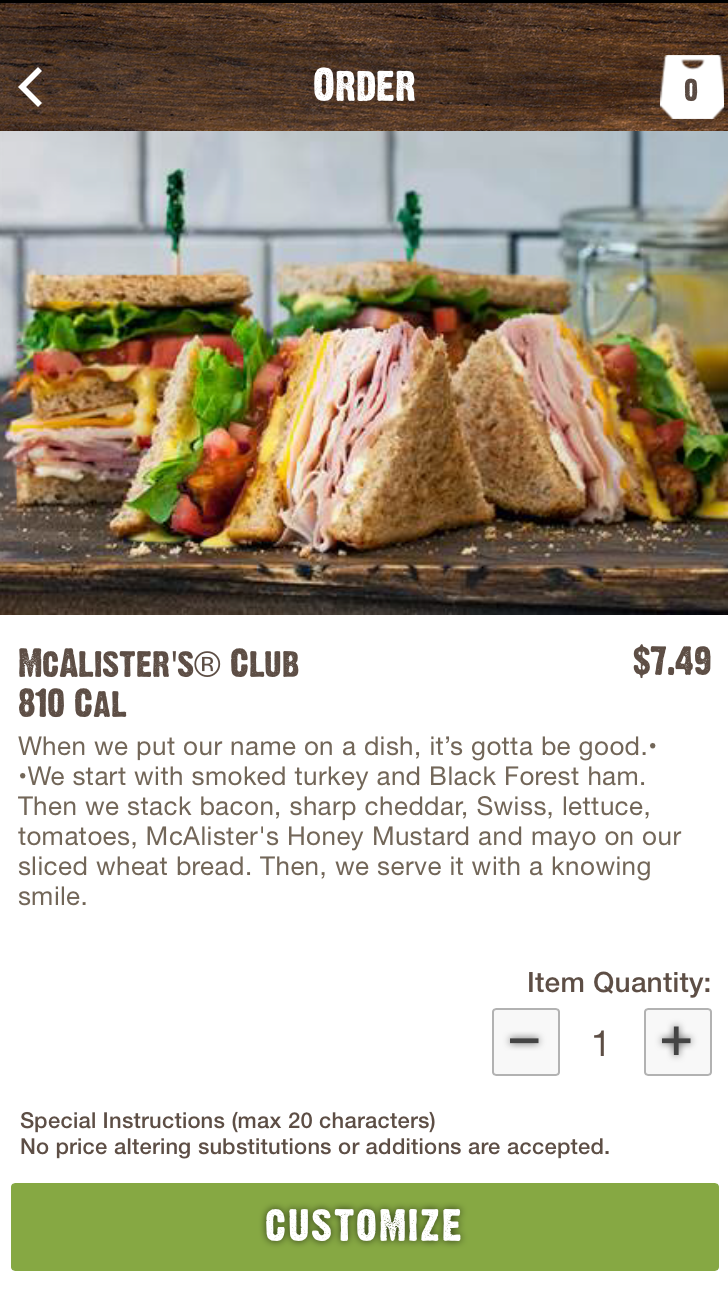
It’s important for any brand to understand their customer, and online and other digital ordering experiences give your restaurant the opportunity to deliver a more personalized experience for your guests. With insight from online orders, self-service kiosks, mobile apps and more, brands can customize its messaging to specific customers. This also helps you continue to extend the experience outside of its brick-and-mortar locations by using restaurant technology to track trends and purchases and grow off-premise dining and revenue.
Brand Refresh: Revamping Your Customer Experience in the Digital Age posted first on happyhourspecialsyum.blogspot.com
Picture Perfect: Tips for Taking Photos and Instagramming Food
I am in the business of words. Writing copy, press releases, emails, sales materials, etc. If it needs to read, then it usually falls on my desk. Words are important — the pen is mightier than the sword and all that jazz. On the other hand, there is another saying — a picture is worth 1,000 words. Can you get more out of a picture in marketing efforts or is it that you need both working in tandem? Either way, words and pictures are an important part of any comprehensive marketing strategy.

Social media in particular marries these two mediums together. One of my favorite platforms is Instagram. In the restaurant space, this is a critical channel. People are naturally taking pictures of their food and talking about your brand, and Instagram is the photo-friendly platform that they are using.
First Things First
Welcome to the world of IG. I’m assuming you have the account, followed your best buddies, and posted that first, slightly awkward photo. You’ve got filters and editing tools, you can also do video. With anything, practice makes perfect, so don’t be afraid to jump in and figure out what pictures do and don’t work.
Quick and Dirty Photography Tutorial
The picture itself says so much and how you take that picture will help or hurt what you’re trying to say. The more creative and visually interesting the shot, the better.
- A lot of people take the big picture view with photography… everything including the kitchen sink is in the shot. With the small picture view, you can give a new perspective to an everyday object. If you get your phone within six inches of the subject, tap the object on the screen and it will focus on it and blur the background. As a photographer friend told me, those blurred backgrounds are the shots that bring in the money.
- If you want to communicate size and scale, step far away. Think of a new angle to take that big picture shot. I took a pic in a warehouse of dozens of pallets stacked up high. Instead of just standing there, I nearly got on my belly to get a little bit of the floor in the picture and the shot was more interesting than if I just stood on my feet. Maybe you want to take a picture of your store front –Get down low and fill the shot with the building and the blue sky.
- Regardless of shooting the big or little picture, you need to pick one thing to be the star of your photograph. This will take your skills up a notch by finding one person or item to frame your shot around. There are times you need pics of more than one person, but make sure you have a grouping of people, which in a way creates that single object or focal point. Again, don’t just point your camera and take the shotgun approach. If you are going big with a scenic picture, what is the main thing in the scene you want people’s eye to fall on when they look at your picture. In the case of a restaurant, find one thing that stands out and frame in into your shot, but that focal point doesn’t have to always be smack in the middle of the shot.
- Let’s talk composition. There is a rule with photography to divide your shot into thirds. Once you have chosen the subject for your photo, put it into one of the thirds of the shot: right, center or left. You want that big view of your busy restaurant. Pick a willing server to frame into the right third with all the activity in the background.
- Speaking of crazy angles and contortions, start observing things and look for a different perspective, that crazy angle. Your pics will communicate creativity. Also, what is interesting in your life or business? People by nature are voyeuristic so play it to your advantage. Give them a peek of your unique world.
- Use plenty of light. Natural light will make your pics look their best. The more natural light, the less you will need to rely on filters.
- Don’t shoot toward a light source or window. Unless you are going after a creative shot, you’ll get a whole lot of light and a silhouette of your subject.

Hashtags Are Key
Instagram started working for me when I started using hashtags. This is how people search other images on varying topics. Try for about 11, but don’t exceed 30. Make sure they are relevant to your business and picture. As you type them out IG will give suggestions with the use count. Shoot for the big numbers. Also, throw in one unique hashtag that represents your business, event or topic that is unique to yourself. My go-tos for our produce group is #producelife and #goforfresh.
Tag Thy Neighbor
At first, I was shy about this. Should I tag other businesses and users? I realized: it helps them, it helps me, it is stupid to not do it. If you have a product, search for that business’ account and show them love. You want your followers and customers tagging you, so give it first. It’s the golden rule.
IG Search and Stalk
As you build your account, know who you are wanting to reach. If you’re a business, who are your ideal customers? Once you have a base of that, watch for the active and successful accounts. Go in and look at who they are following and start following them. On that note, also look at the hashtags they are using and start adding them to your pictures. If you are in your niche market, this will build you a great account and following.
Get Social
Another way to get some traction building your account is to "heart and chat" on other accounts. This goes right back to the golden rule … do to others what you want done to you. Besides it is fun. Think of encouraging comments and make some friends. The best part to these platforms is the community you can build and really cool people you meet, and if you aren’t incorporating genuine appreciation and service to your customers and potential customers, you will be found out. There is a lot of transparency that comes with social media and those that are out for the other person’s good will be just fine.
It’s About Industry Love
One thing with IG for business is that you will stumble across competitors. One way to think about this is industry love in addition to love for your brand. A lot of people are out there doing cool things in your space and you can balance competition with cooperation. Interact and have fun with your competitors — what’s good for your industry is good for you.
Make Your Picture Count
Pictures should complement your brand’s written message by reinforcing it. If you tell people your business is focused on customer service, show real pictures of your team serving customers and working happily.
Does your messaging tell people that you are the expert? Take pictures of your team doing their thing and what they are skilled about. You can also take pictures of industry best practices and shoot some video as well for an Instagram story. This is exactly why pictures are worth 1,000 words, they are proof of action and back up the things you are writing. Shoot for posting three to five times a week.
Picture Perfect: Tips for Taking Photos and Instagramming Food posted first on happyhourspecialsyum.blogspot.com
Monday 26 November 2018
MRM Meditations: Nick Komandis of Hansel ‘n Griddle
In this MRM Meditations video, Nick Komandis of Hansel 'n Griddle discusses the importance of finding a mentor.
MRM Meditations: Nick Komandis of Hansel ‘n Griddle posted first on happyhourspecialsyum.blogspot.com
Don’t Be Afraid: Growing Your Business With Ghost Kitchens
Opening a new restaurant is notoriously difficult.
Staying open and growing can be even harder. More than half of new restaurants fail within their first year. If your restaurant has survived past that critical first anniversary or business is thriving, you may be thinking about expansion.
Growth is exciting, but carries its own risks. Opening a new location involves many upfront costs and expenses including committing to a new lease, build-out and alteration expenses, hiring new employees, advertising and more. Recent surveys indicate that the average startup costs for a new restaurant location in the United States is almost $500,000. This is a significant sum even for established restaurant chains.
One creative and cost-effective way to expand your restaurant is through the use of mobile “ghost” kitchens instead of traditional brick and mortar locations. A mobile “ghost” kitchen (also known as a “dark” kitchen) is a fully equipped commercial grade kitchen located in an outfitted tractor trailer truck. These rolling commissaries allow established restaurants the opportunity to test new markets and expand beyond their current delivery radius without the risk and expense of establishing additional physical dine-in or take-out locations.
These rolling commissaries allow established restaurants the opportunity to test new markets and expand beyond their current delivery radius without the risk and expense of establishing additional physical dine-in or take-out locations.
Mobile “ghost” kitchens can be leased on a short-term basis and are growing in popularity, particularly in high-cost metropolitan areas. While presenting an exciting and economical approach to tapping new markets, there are many legal issues to consider when opening a “ghost” kitchen.
The truck owner must have the proper licenses and permits from the state, city or local government. This should include, without limitation, a current business license and evidence of compliance with all health department rules and regulations, including food safety inspections. Further, the truck owner should be able to provide evidence of compliance with all U.S. Department of Transportation requirements, such as valid title, registration, and insurance on the truck. When deciding on who to contract with, it is prudent to ascertain whether the truck owner has any disciplinary or violation history regarding any of the above.
Additionally, the lease or license should ensure that the mobile “ghost” kitchen complies with all applicable land use and zoning codes and regulations. For instance, the truck, while in operation, must be parked on land that is properly zoned for such commercial use.
In some instances, the owner of the truck may have leased the truck to a third party to maintain and operate. In such instances, in preparing the lease or license for the restaurant, it would be necessary to review any contracts between the truck owner and the third party to ensure compliance with all laws, rules and regulations. Moreover, it would be important to confirm that there is nothing prohibiting the third party from subleasing or sublicensing the truck.
It is important to confirm that the term of the lease or license is at least as long as the term of any land lease between the truck owner (or third party lessee) and the owner of the real-property where the truck will be parked. This is to ensure that the truck can remain on the land for the duration of the lease or license term. Moreover, if the land that the truck is situated on is mortgaged or subject to a ground lease, it is important to make sure that the operation of a mobile “ghost” kitchen on the land would not violate any terms of the mortgage or ground lease.
The lease or license should also contain a provision relating to repair, maintenance and upkeep obligations. For instance, a lease or license agreement could be drafted in such a way so as to shift the burden of maintaining the truck and the kitchen equipment contained therein from the restaurant to the truck owner, as well as, to provide protection to the restaurant in the event that the kitchen were to become inoperable. Moreover, in instances where the use of the mobile “ghost” kitchen is not exclusive to just one restaurant, there may also be additional considerations regarding the repair, maintenance and upkeep obligations for the shared equipment.
The lease or license should also contain an insurance provision providing that the truck owner carries the appropriate level of liability insurance, naming the restaurant as an additional insured under the policy. Additionally, the restaurant should also have its own general liability insurance to cover the operation of the mobile “ghost” kitchen.
Despite the growing use of mobile “ghost” kitchens, there is no standard lease or license as each transaction will have its own peculiarities. A prudent restauranteur can utilize these mobile “ghost” kitchens to explore new markets while avoiding many of the risks involved with a dine-in location but should seek the advice of counsel to carefully review any relevant ancillary documents, ensure all rules and regulations are adhered to, and to prepare the appropriate lease or license agreement on their behalf.
Don’t Be Afraid: Growing Your Business With Ghost Kitchens posted first on happyhourspecialsyum.blogspot.com
Leasing Nightmares: Avoiding Lease Problems Before Opening for Business
Blackacre LLP is a boutique fixed fee real estate law firm with a restaurant leasing specialty. From its experience serving as counsel to numerous restaurant clients, Blackacre’s attorneys know that a good lease is crucial to a restaurant’s success, while a bad lease can doom an otherwise successful restaurant to failure. In the coming articles, Blackacre’s attorneys will write on how to prevent a restaurant lease from becoming the next “Leasing Nightmare."
While much thought and consideration during lease negotiations is given to protecting a tenant from its landlord’s acts or omissions during the lease term, some of the most commonly-encountered issues after lease execution pertain to the earliest stages of the landlord-tenant relationship, specifically the phase where the parties are preparing and exchanging plans for the premises, obtaining construction and use permits, and building out the space for the tenant’s use – all of which should occur well before a tenant actually opens for business at the premises and begins paying rent.
If a tenant’s lease is not carefully negotiated …
If a tenant’s lease is not carefully negotiated, a tenant may find itself bound by lease for premises in which it can’t successfully operate or it may be required to start paying rent well before it’s open for business and generating revenues. As discussed in this article, in order to avoid this potential Leasing Nightmare, it is critical to negotiate adequate protections in the lease for issues that may arise during these early stages of the relationship – such that a tenant has adequate recourse if it can’t obtain building or use permits or the landlord fails to timely and/or properly deliver possession of the premises to tenant – all to ensure that rent does not commence until tenant is truly ready and able to open for business to the public.
Tenant’s Plans and Specifications
Once a lease is executed by the parties, typically the next step for a tenant is to prepare its plans and specifications for its build-out, obtain the landlord’s approval for such plans and obtain all necessary permits for such work. Most landlords will have approval rights over tenant’s plans and specifications and will require a tenant to provide draft plans within a certain time period following lease execution.
… a tenant may find itself bound by lease for premises in which it can’t successfully operate or …
In order to successfully navigate this earliest stage of the relationship, it’s important that the lease contain very clear deadlines and requirements with respect to tenant’s obligation to provide plans for landlord’s approval. Given that there may be penalties in the lease for a failure to timely prepare plans, it’s critical to ensure that the tenant can realistically meet such deadlines (in consultation with tenant’s architects and designers), and that it has the necessary materials to commence preparation of plans. The lease should specify whether the tenant requires certain “base building plans” from the landlord as a pre-condition to tenant commencing its plans, and any deadline for tenant’s plans in the lease should not commence until tenant has received landlord’s plans.
Following tenant’s preparation of plans, a landlord will normally have some time to review and approve (or disapprove, as the case may be) tenant’s plans. Assuming that the tenant may have a tight schedule for construction and opening, the lease should indicate precisely how long a landlord has to review and provide comments to tenant’s plans. For example, the lease should state that landlord has up to 10 days to review tenant’s plans, after which tenant has 10 days to respond with revised plans, and so on, until the plans are approved.
In order to avoid a landlord dragging its feet on reviewing plans, or not providing any response whatsoever, a lease should also specify that the plans are “deemed approved” if the landlord hasn’t responded by its review deadline. This helps to ensure that both parties are motivated to review and respond to their respective submissions in the interest of having plans finalized as quickly as possible.
Building and Use Permits
Following landlord’s approval of tenant’s plans, the lease will often require the tenant to apply for building permits with applicable local authorities. Again, the lease should be specific regarding the deadline for tenant to apply for such permits, and for the avoidance of any disputes as to whether such applications were timely submitted, tenants should keep records of all submissions and keep the landlord apprised as to all communications with the municipality.
… it may be required to start paying rent well before it’s open for business and generating revenues.
Some tenants are keen to get through the planning and permitting processes as quickly as possible. Accordingly, tenants often submit their plans to both the landlord and the municipality concurrently, such that both parties are reviewing and commenting on the plans simultaneously. While doing so could result in a tenant having to deal with two sets of comments at the same time, it can also help avoid multiple rounds of revisions later in the process and significantly shorten the time period for obtaining approvals and permits.
One of the worst nightmares a tenant can experience is having its plans or use applications rejected by applicable authorities without having any recourse under its lease. In this situation, a tenant could find itself bound by a long-term lease – with obligations to pay rent, maintain the premises and otherwise perform under the lease – without being legally permitted to operate its business or to build the space as tenant desires. In order to avoid this particular nightmare, it’s critical to insist on having a permit contingency in the lease, such that the tenant can terminate the lease if, despite its good faith efforts, it’s unable to obtain its building permit for the approved plans or is unable to obtain any necessary use permits or licenses (including any permits which may be required for alcohol sales, building signage or other operational aspects of the business).
Landlords, however, are typically reluctant to agree on any tenant-oriented permit contingencies, as any landlord wants a binding long-term agreement without any “outs” for the tenant. Accordingly, a tenant should be prepared to negotiate with the landlord over this provision, with the understanding that it may be difficult to ultimately obtain a permit contingency. Without a permit contingency, a tenant should make sure it’s absolutely certain that it can obtain all required building and use permits and licenses without issue before executing the lease.
Landlord Delivery Failures
Another potential nightmare involves a landlord’s failure to timely deliver the premises to a tenant in the condition required by the lease. Unless a lease contains specific penalties for such failure, a tenant could find itself in a position where it is waiting indefinitely for its landlord to perform, without any recourse. In order to avoid this particular nightmare, it is critical for the lease to include certain protections for the tenant. First, the lease should specify an “anticipated” delivery date for the premises. Second, in the event that landlord fails to deliver possession by the anticipated date, the lease should include specific penalties.
A well-negotiated lease will often enable a tenant to receive rent credits and/or late fees if the landlord fails to deliver on time, as well as a termination right with reimbursement of tenant expenses if landlord fails to deliver by some further outside date. Third, and probably most importantly, the lease should delay rent commencement until landlord has delivered the space and provided an appropriate build out period.
Rent Commencement
Ultimately, the landlord’s main goal throughout the early stages of the lease relationship is to have the tenant commence paying rent as soon as possible. Accordingly, landlords will often attempt to negotiate rent commencement provisions that require rental payment to begin on a specified date, or solely following landlord’s delivery of possession of premises.
From a tenant’s perspective, rent should not commence until tenant has a fair chance to complete its plans, permits and build-out and open for business in the premises. Most tenants will agree that it would be a major nightmare to be required to pay rent prior to opening for business. The best way to mitigate this nightmare is to negotiate a rent commencement provision that accounts for both landlord’s delivery obligation and tenant’s permit risk, such that rent will not commence until both the premises has been delivered (in the condition required by the lease) and tenant has obtained its required permits. Rent commencement provisions are often drafted such that tenant will have a specified period of time (often between 90 and 150 days depending on the complexity of the improvement work) following both delivery of possession and receipt of permits. Most landlords will also insist that rent commence on the date tenant opens for business if earlier than such specified build-out period, but that’s typically not a problem for tenants since at that point presumably revenues are being generated.
Conclusion
The early stages of the lease relationship can be fraught with issues if a lease is not carefully negotiated. It’s difficult enough for a tenant to generate plans, obtain governmental approvals and build out a space (and pay for all of it) without also having to deal with the landlord failing to do its part.
Accordingly, it’s critical that any lease include protections for tenants such that both parties’ obligations are clear, with specific remedies available if the landlord fails to perform. Without such protections, tenants may find themselves in very difficult situations – including paying rent before opening for business, having to accept possession of space that doesn’t match expectations, or being bound by a long-term lease for premises that don’t work for the intended uses. Most of these potential nightmares can be appropriately mitigated by including protections and remedies in the tenant’s lease.
Leasing Nightmares: Avoiding Lease Problems Before Opening for Business posted first on happyhourspecialsyum.blogspot.com
Thursday 22 November 2018
Five Holiday Marketing Ideas for Restaurants
The holidays can be the season of boom or bust for restaurants.
To make sure it’s the former, it’s important to implement a well-thought-out holiday marketing strategy. Not only will this help you cash in on the seasonal spending frenzy, it will also let you capitalize on a great opportunity to increase brand loyalty.
Let Your Customers Know About Seasonal Menu Items
Are you serving up spiced eggnog or baking holiday ham? Your customers want to know about it. To spread the word effectively, plan your seasonal menu changes well in advance and then come up with a plan to communicate the new items to your customers.
- Update your physical menu
- Call out the new menu items on your website
- Share the menu additions on social media, along with a professional quality photo or video if possible
- Send out a marketing email inviting your customers to come try out your seasonal options or submit their favorite recipes

Offer Gift Cards
The holidays are gift-giving season, but retailers shouldn’t be the only ones to benefit from it. Even if you don’t have menu items that make for good gifts, you can get in on the gift-buying action by offering gift cards. In addition to giving your restaurant an immediate infusion of revenue, gift cards encourage repeat visits, and studies show that 65 percent of gift card holders spend an extra 38 percent beyond the value of the card.
- Train your front-of-house staff to ask customers if they would like to purchase a gift card when it comes time to pay the bill
- Display gift cards prominently at the host station or checkout counter
- Advertise gift cards on your website and notify customers with a marketing email
- Run a contest on your social media channels where you give away free gift cards to generate interest and demand

Give Back
There’s no better way to build goodwill with your customer base than by contributing to a cause that reflects your business’s values. You can host a toy or food drive, donate a certain percentage of proceeds to a charity, put together a volunteer team to help local people in need, or anything else that’s close to your heart.
The key to success is to give back in a way that engages your customers to participate. Then, of course, you need to spread the word about your ongoing efforts through social media. This not only amplifies the impact of your giving efforts by prompting participation, but also gives you an opportunity to connect with your customers in a meaningful way that will reinforce customer loyalty.
Reach Out to Other Local Businesses
Who doesn’t love a good office party around the holidays? More importantly, what fun is a holiday party without good food?
If you have the bandwidth, you can take advantage of the holiday party season by reaching out to other local business to let them know how your restaurant can accomodate them. Sending postcard mailers is the traditional way to advertise this, but marketing emails are the more economical approach if you can get the email addresses of other businesses through the local chamber of commerce or another networking association.
- Make sure to clearly communicate the deadlines for private party reservations and/or catering orders
- Consider streamlining your menu for holiday catering and private parties to minimize the extra workload on your staff and simplify food supply ordering
Don’t Forget About Your Employees
As a business owner, it’s crucial to take care of the people who take care of you.
There are numerous ways to show your employees that they are important to your business and that you care about them. Bonuses or gifts are great, but that isn’t always in the cards when cash-flow is at a premium. As an alternative, consider hosting an after-hours event for your employees and their families–where everything is pre-prepared so none of them have to work!
Whatever it is you do, make sure it’s meaningful to your employees. Happy employees not only have better attitudes, but they also put also put in more effort and can become some of your best marketers by spreading the word about how much they love your restaurant.
Five Holiday Marketing Ideas for Restaurants posted first on happyhourspecialsyum.blogspot.com
Wednesday 21 November 2018
Little Daisy Bake Shop: Blooming a Bakery
The Little Daisy Bake Shop is the place for nostalgic desserts you grew up eating as a kid, except it is committed to be a peanut-and-nut free facility. All items are baked from scratch using family-inspired recipes.
In this MRM Profile, Jennifer Snyder discusses baking trends and and the importance of community involvement.
Little Daisy Bake Shop: Blooming a Bakery posted first on happyhourspecialsyum.blogspot.com
Stop Hoping Employee Turnover Will Go Down and Do Something About It Right Now
Say you began the year with 500 employees. By December 31, 365 of those employees will have churned out. Left. Quit. Moved on. This is because, according to the United States Bureau of Labor Statistics’ the annual employee turnover rate in the restaurants and accommodations sector was 73 percent. It’s even worse in the QSR space where, according to Cornell’s School of Hotel Administration, “employee turnover is typically in excess of 120 percent.”
Turnover will always be a part of the restaurant game, but you can do something about it.
Some of that can be ascribed to the nature of the beast: few people are interested in serving, bartending, hosting or bussing their whole lives, or even a few years. Restaurant jobs are inherently short. But it’s jaw-dropping to acknowledge that such a massive percentage of the restaurant labor force turns over within 12 months of starting a job.
Sure, most of these lost employees aren’t high cost. They’re hourly, with some making most of their income on tips. But the real cost lies in replacement. Cobbling together time spent hiring, HR resources, lost revenue, replacing a single hourly worker can cost thousands.
But keeping them around even just a few months longer can reduce that loss.
To date, most retention strategies have focused on qualitative things like employee engagement, improved onboarding and feedback. Those are all worthy pursuits, but what about the quantitative side? What about what matters most? What about money?
From Psychology Today: “Research shows that income has a positive relationship with happiness (life satisfaction)… As income increases, its added contribution to life satisfaction becomes smaller. The impact of additional income is greatest among those who have little money, but it does not stop mattering, even after someone is able to meet basic needs.”
In emoji speak: money =  .
.
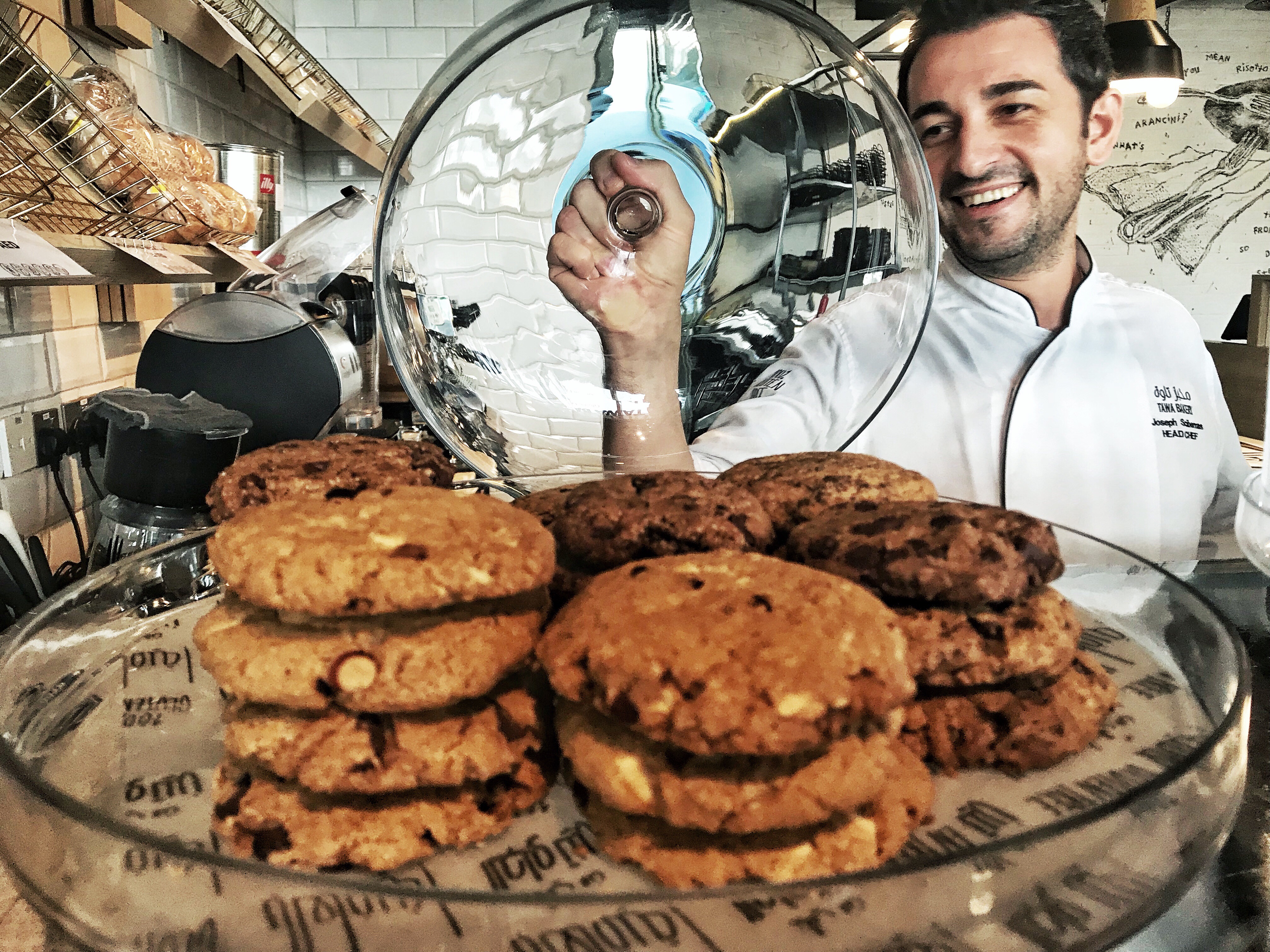
While companies such as Amazon lead the charge in raising hourly wages, offering $15 an hour isn’t realistic for small and mid-sized restaurant groups.
So if more money makes for happier employees and happier employees stick around longer but boosting pay in a meaningful way isn’t possible, what do we do?
We turn to tech.
There are a number of startups developing innovative new technologies designed to positively impact employees’ wallets. Take Even for example. The app that allows employees to get paid before payday partnered with Walmart to help hourly workers “access a portion of wages for hours they have already worked.” That’s an incredible way of addressing gaps in cash flow that most working families feel every month. Workforce management system, Shyft, gives employees the ability to trade shifts and thus ease scheduling tensions. Alice makes it easy for employees to keep more of what they earn by automating pretax spending on things like subway passes, bus fare, parking, eyeglasses, prescriptions and daycare. (Full transparency: I work at Alice.)
A common thread amongst these technologies is a fresh approach to delivery. Benefits and shift scheduling and advances used to happen in meetings where HR teams had to lure folks with almost-stale donuts. That’s not how today’s employee functions and it’s certainly not how today’s restaurant worker operates. In the restaurant world, everyone is rushed. There’s no time for meetings, forms or mental math. So to drive adoption, tech companies are reducing the friction, primarily delivering their services in ways your employees prefer: on their phones. Some even go a step further and deliver their solution where employees spend the most phone time (Think: texting.)
Employee turnover will always be a part of the restaurant game, but you can do something about it. You can implement simple, easy-to-use technologies that positively impact your employees’ wallets. When that happens, your employees worry less. They’re happier at work. They stick around longer.
Stop Hoping Employee Turnover Will Go Down and Do Something About It Right Now posted first on happyhourspecialsyum.blogspot.com
Tuesday 20 November 2018
The Future of Digital Signage in Restaurants
From large video walls to multi-source/multi-display applications and control systems, the use of digital signage in restaurants is becoming increasingly common.
The Benefits of Having a Digital Signage System
Digital signage gives restaurants the tools needed to deliver customized content, media playlists, and live TV to multiple displays, allowing them to show targeted information to a specific audience at a specific place and time. There are several reasons why the use of digital signage systems at restaurants is becoming more popular, but the top two reasons relate to entertainment and information. Not only is digital signage visually appealing, allowing restaurants to display eye-catching content for marketing and promotional purposes, but it is also a convenient way to display information to customers.
One example of digital signage use in restaurants includes digital menus located above the ordering counter at a fast food restaurant, making it easy for customers to view their options when placing an order. Another example is having multiple displays showing different sporting events at a bar. Sports bars using a digital signage system gives staff the ability to control multiple televisions in different locations via a single mobile device, potentially saving the restaurant time, space, and money.
Considerations When Choosing a Digital Signage Solution
A typical digital signage solution is composed of one or more displays, a content management server, different operating systems, and a distribution infrastructure. A reliable solution successfully integrates hardware and software elements seamlessly, simplifying the implementation process and combating the challenges of content management down the line.
A typical solution may include:
- Video wall media players
- Web interface video wall and scheduling setup
- Matrix switches to design and manage connections
- Video splitters to distribute content
- Extenders to increase the distance of installations
- Cables to connect sources and displays
There are specific criteria restaurant owners should consider when deciding on a digital signage system. The primary consideration should always be the content being shown. For example, is it a live sporting event that requires higher frame rates, or a simpler menu display where most of the content is static?

Having a convenient and efficient way to update the content is also important. For example, will the content be shown on a single display or a video wall? If using a video wall, will there be a need for switching between different content and the flexibility to choose various displays? If the video wall function built inside the displays is used, while a component (e.g. a video matrix with video wall function) can be saved, the displays may eventually need to be upgraded; therefore, replacement issues should also be considered. These are all important factors that should be discussed before deciding on a final solution.
The Key to a Successful Installation
The key to a successful digital signage installation is the seamless distribution of A/V source content to multiple displays. Whether the content is from media players or computers, and the displays are for information or entertainment purposes, the distribution system must enable administrators to quickly and easily control the content displayed from a convenient, central location.
The Future of Digital Signage
As digital signage becomes increasingly sophisticated and affordable, and with 4K being the next generation of quality for high-definition video, it’s no surprise that digital signage is one of the leading Pro A/V industries in 4K adoption. For restaurants, as in other digital signage applications, this means the future is 4K. With four times as much detail as 1080p full HD resolutions, 4K can create stunning digital signage product promotions for both the video streaming market and the retail market, enabling businesses to really stand out from the crowd and gain maximum benefits from their communications investment.
Additionally, more interaction and control bring with it different needs and requirements, such as USB connections for devices like touch panels, cameras, mini PCs, etc. For example, applications with multi-point touch screen panels may require solutions that have better compatibility.
As technology continues to evolve, one thing is certain – the use of digital signage in the modern restaurant environment is here to stay and remains a cost-efficient, user-friendly solution aimed at enhancing the customer experience.
The Future of Digital Signage in Restaurants posted first on happyhourspecialsyum.blogspot.com
How to Win Every Customer’s Heart
Every service industry wrestles with one problem that is central to everything else we do. We pay a lot of advertising money to draw people ...

-
Every service industry wrestles with one problem that is central to everything else we do. We pay a lot of advertising money to draw people ...
-
This edition of Modern Restaurant Management (MRM) magazine's Research Roundup features F&B companies views on mobile technology, ...
-
McDonald’s recent acquisition of decisioning engine Dynamic Yield for $300 million is a clear indication of the vital importance of personal...